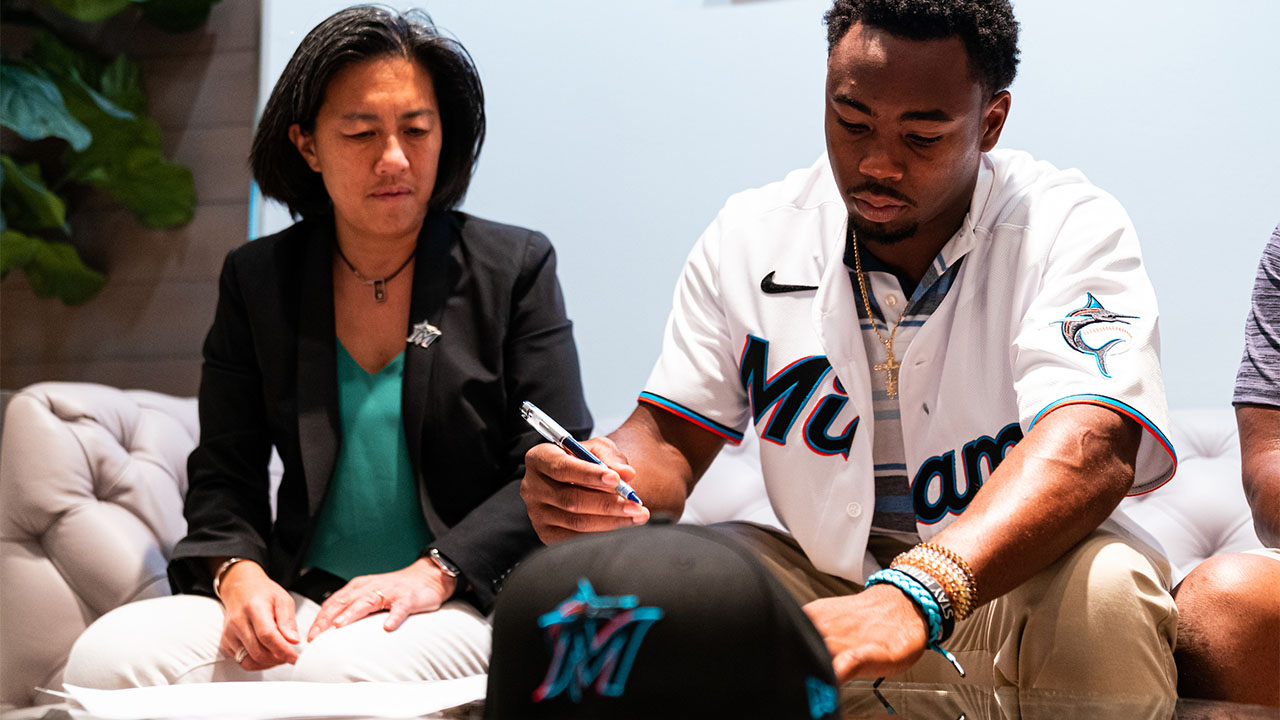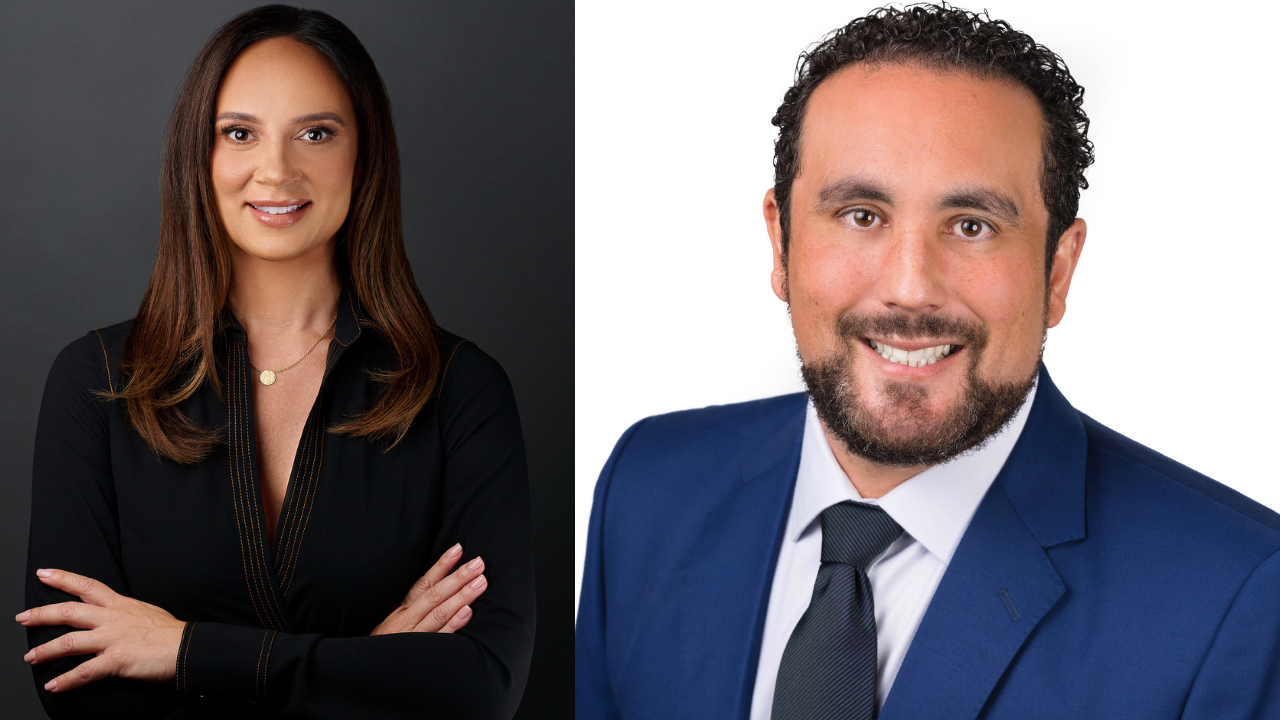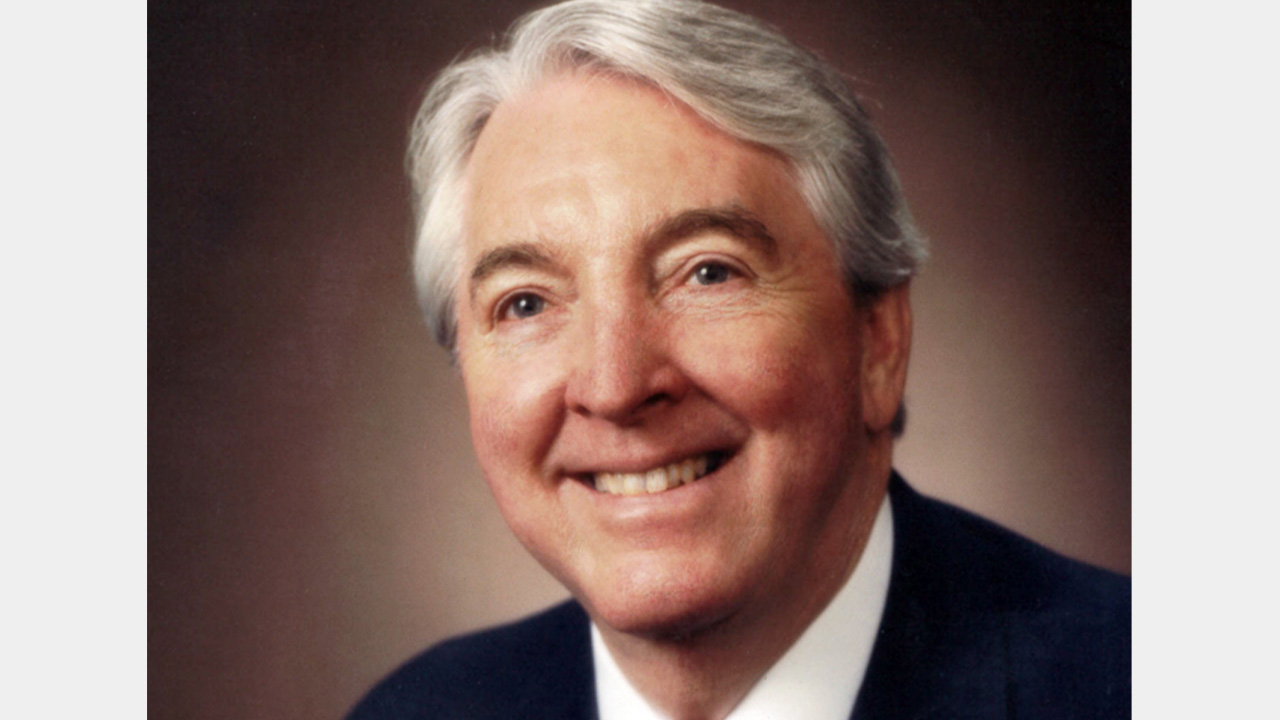By October of last year, the “Fire Kim Ng” thread that started on a Miami Marlins fan site in May 2022 had 22 full pages of debate regarding the job being done by the first female general manager of a team in one of the four major professional men’s sports in North America. The Marlins had shattered a glass ceiling with the move, but less than two years into Ng’s tenure some of same people who applauded the organization’s hire in November 2020 were calling for her job.
No one posts on that thread anymore, perhaps for reasons that speak to a scene that Ng watched unfold in late June from her office window overlooking the west plaza at LoanDepot Park. Almost 22,000 fans—nearly double the team’s average home attendance in 2022—poured through the gates that Sunday to see Miami blank the Pittsburgh Pirates, 2-0. It marked the team’s 45th win in 79 games, the second-best start in franchise history. As of June 29, the Marlins were 47-34, having won seven of their past 10 games.
For Ng, who’s also the first East Asian American to hold the general manager title in Major League Baseball, there was a different kind of victory to savor that Sunday.
“I took a picture from my office [of the throng of fans entering west plaza gate that day] and sent it to my husband,” Ng says about an organization that averaged only 68 wins a season during her first two as general manager. “It’s amazing to me to know where we’ve been and where we are. It’s been a long time coming. It’s fulfilling to see tangible results of the hard work of the baseball operations staff. The past [few] months have been pretty fun.”
Part of that fun has been the pursuit of baseball history by Luis Arraez, the second baseman acquired by the Marlins in an offseason trade with the Minnesota Twins, the signature deal during Ng’s time with Miami. For much of the early season, Arraez has flirted with baseball’s sacred .400 batting average. No player has finished an entire major-league season with an average of .400 or higher since Ted Williams hit .406 for the Red Sox in 1941.
Meanwhile, Ng continues to make history of her own. In late June, she traveled to Washington, D.C., for the inaugural meeting of the President’s Council on Sports, Fitness & Nutrition. Ng was nominated to serve on President Biden’s federal advisory committee that seeks to “empower all Americans to adopt a healthy lifestyle,” with an emphasis on physical activity, good nutrition and mental health. The council includes a mix of CEOs, physicians, nonprofit leaders, athletes and other accomplished professionals.
Ng shares thoughts on the President’s Council honor, her management style and the inspiring example she continues to set for women around the world.
It’s quite a journey to go from a young girl playing stick ball in Queens to being general manager of a major-league team and, now, serving on the president’s council. Is there a part of you that’s able to let that soak in?
Honestly, there’s not a whole lot of time to let it soak in. It’s going from one firestorm to another [in her job], so I didn’t even have time to prep for the council meeting until getting on the plane. … But it is an incredible honor to be recognized in this way. The platform that the Marlins have given me has been so meaningful not only to myself but to many others who see the accomplishments of a woman in this industry—which, obviously, is not easy to do. The meeting [of the president’s council] actually got moved to the White House, which [was] pretty cool. So, yes, it’s times like [that] where you do need to take a deep breath and enjoy the moment.
What did you take away from the experiences in 2021 and 2022 that have helped you in 2023?
Where do I start? In terms of knowing staffs, that’s been an important one. Knowing how people think, how they advise you, what are their hot-button items—where they feel strongly, where they don’t feel strongly. I’m the type of executive/leader who looks for collaboration and advice. But, in doing that, you do need to have a very good understanding of who your staff members are and how they think about issues. Then there’s technology, which has changed more the past 10 years than in any other decade that baseball has been around. The integration of analytics, and how we can use [that information] to help us in instructing the players, has opened my eyes. This year in particular [the Marlins have incorporated analytics] in more pragmatic and sensible ways.
Not all leaders have the patience to try and understand what makes the individuals on a team tick—let alone tap into that for the benefit of the organization.
You have to take the time to do that in order to be effective in the way that I like to manage and run a process. If you don’t, everybody’s vote is going to count the same in different circumstances. And that just doesn’t make sense. There are many layers to how you think about problems. You have to understand what’s under the hood, and then you have a better idea of [what informs] those layers.
You were consistent in preaching patience with the organization’s long-term goals over the past two years, but fans are all about instant gratification. How do you reconcile the idea of building a foundation for long-term success and the desire for a quick fix?
The key to that is communication. You try to bring people along with you by explaining to them the items that you’re focused on and why. And when you’re able to accomplish small goals, you need to point those out. So, the first step is benchmarking. The second step is showing progress. People want to feel like there’s progress. Some fans can be patient as long as they know you’re taking steps and heading in the right direction. I had people stop me in the stands last year after the trade deadline. It was another trading deadline where we were sellers. But some people were encouraged; they told me they liked the direction the club was going and wanted us to stick with it. Words from fans are always helpful to keep your hand on the pulse of what’s going on. On the flip side, you’re not always going to make fans happy. But you have to understand what your core values are, what your goals are, and try to be mindful about staying on the road toward those goals.
Did any of scattered personal criticism that you were in over your head ever get to you?
When it gets kind of crazy like that, I don’t read too much. I ask [the team’s vice president of communications] to edit that for me. [Kim laughs] This is the job that we signed up for. Clearly, it’s the fans’ love of the team that drives them to say some of those things. They’re passionate. That’s what we appreciate in sports. When I was a kid, I felt the same things about my teams.
Do I dive in and read it all? I don’t. I also tell my husband not to read too much of that stuff. At a certain point, as an executive, you have to remain unemotional in your decisions. If you’re hearing too much one way or another, you probably need to take a step back so that you stick to your convictions and goals.
After the 2022 season, there were significant organizational changes—you hired a new director of player development, new director of scouting, new manager and new coaches. Was part of that meant to send a message about the expectations you have for the organization and where you want the bar to be? Really, what a lot of that boiled down to was wanting everybody to be on the same page. Whatever goals you set forth, it’s important to me that everybody work as a team toward those goals.Change is hard. But at the end of the day, we all have to be pulling on the same end of the rope. We all have to feel like we’re going in the same direction. If you don’t, there probably needs to be some change.
During the offseason, the Marlins traded starting pitcher Pablo Lopez and two solid prospects to the Minnesota Twins for Luis Arraez. It’s one of those moments as a general manager that can define your time with the team. Ultimately, when it came time to make that deal, did you rely more on the homework you’d done and your baseball experience? Or did you go with your gut?
It’s a combination of all of it, really. It was relying more on my gut for the type of hitter that we wanted to go after. Right now, baseball is more enamored with home run hitters. And Luis Arraez is not of that cloth. But he’s a very, very productive offensive player. We had been in the market for a young hitter for well over a year. We’d just never found the right deal. Either the other club was asking too much, or we were asking too much. We actually talked about Luis the previous year as well, but we couldn’t make it happen at that point. This time, it came together fairly quickly, all things considered. We used all the resources we had [in making the decision]—whether it was analytics, our scouts’ evaluation, our vetting of his personality and how we felt he’d fit in our clubhouse. All of that was covered.
Back in January, Sports Illustrated wrote that the Marlins got fleeced by the Twins for making that deal. Can you gloat just a little bit, knowing this has panned out for the Marlins, at least through the first half of the season?
Yes, I can. I usually do it in private though. [Kim laughs]
I try not to get too high or too low one way or another. These things obviously can back up on you as well. But, look, as I mentioned before, you have an idea of what you’re trying to achieve. You have conviction in why and how you’re going to go about it. And then you believe in your process and believe in your people—and let the results play out.
For obvious reasons, so much about your hire initially involved breaking barriers—you even wore a shirt with those words on it. Having lived with it for a few years, how do you view the platform that you have?
It’s [remarkable]. It truly is. The announcement itself, at that time, received so much play. I saw the power of social media firsthand when famous people were picking up on it. In the end, it makes me realize—but I’m also grateful for—just how big of a platform it is. And how much responsibility I have to uphold what people think can be achieved.
Is there a sense of, “I’m the first through this door, so I can’t stumble”? In other words, do feel a little added responsibility to succeed for the women who are so inspired by you?
It’s not little. And it’s a constant in my life. Because you know that you’re carrying the torch for so many people. It’s not just about the path that I’m creating for women in baseball. It’s really about having people believe that something can be achieved that, at one time, they didn’t think was achievable for a certain person or a certain type of person. It’s nothing I take lightly. And it’s always there. It’s there when I talk to young girls at a Marlins game. And it’s there when I’m speaking to young female executives in the business world.
Are there any encounters or texts or calls that have stood out for you over the past few years, people who’ve been influenced by your hire or your example—or your journey?
When it was first announced, there were very cool shoutouts from Billie Jean King and Michelle Obama and Hillary Clinton. Since then, it’s more like the people I recently encountered on a plane. A mom and her young daughter asked, “Are you the general manager of the Marlins?” I said, yes, and the mom said, “We heard you speak last year. It’s so fun watching you and seeing the team doing great.” You see way the little girl is looking at you—the adoration—and that’s so cool. The idea that, in her mind, you’ve possibly planted the seed that she could one day sit in my chair. That’s pretty amazing.













